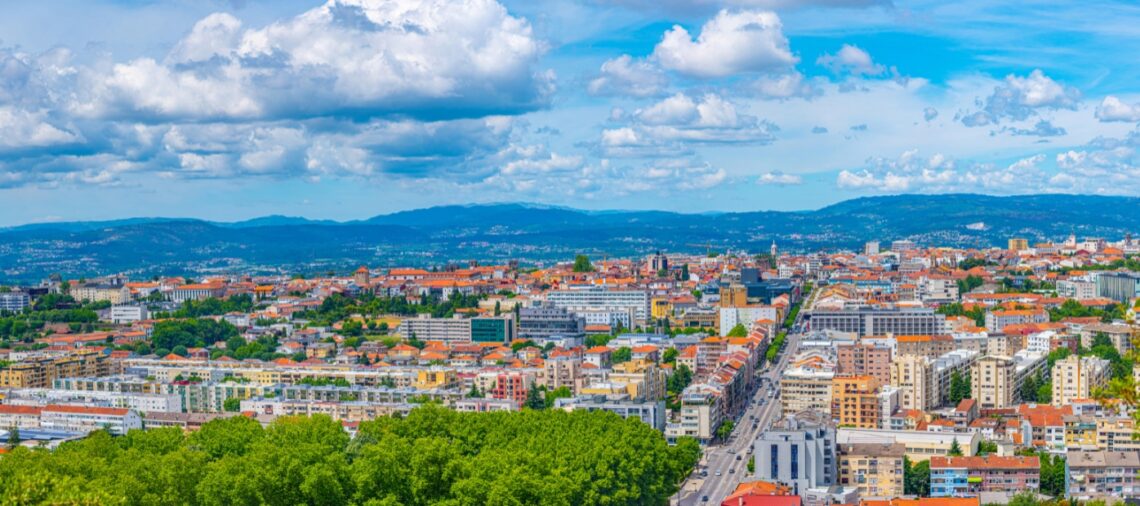Discover the enchanting city of Braga, known as the Religious Capital of Portugal. Immerse yourself in its rich history as you explore a mesmerizing collection of historic churches and experience the vibrant religious festivals that bring the city to life. Braga holds a significant role as the “Rome of Portugal,” boasting awe-inspiring architectural gems and a profound religious heritage. Let’s find out more about the attractions in Braga and what to see in Braga:
Braga’s Religious Significance
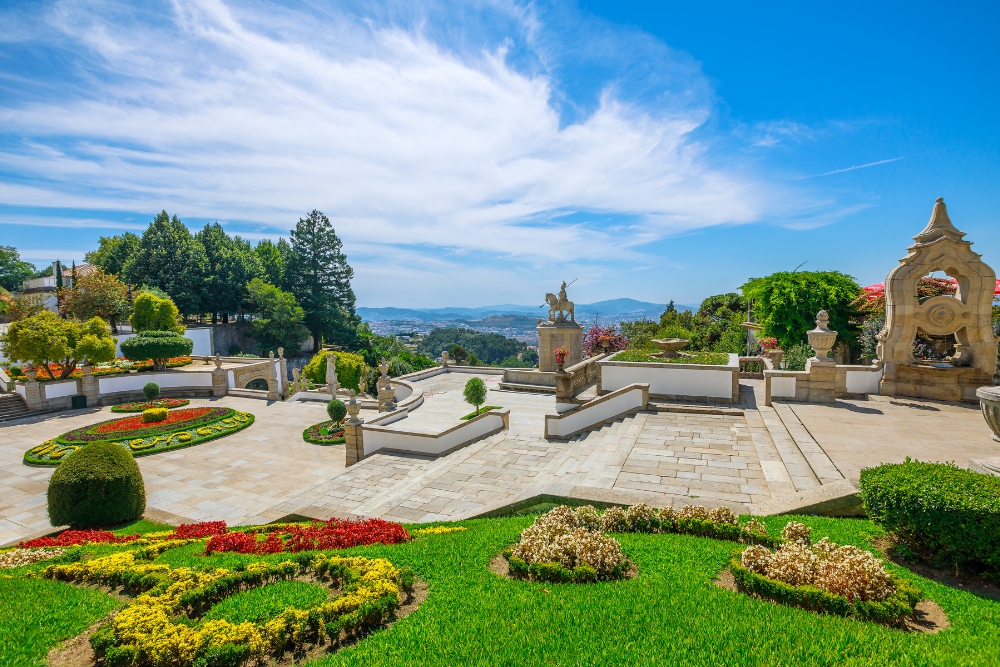
Braga, located in the northwestern part of Portugal, has a rich history and deep-rooted religious traditions. Braga stands out as a prominent destination for spiritual pilgrims and history enthusiasts alike, also the city’s collection of historic churches, religious festivals, and monasteries make it a vibrant center of religious heritage.
Overview of Braga’s nickname – the ‘Rome of Portugal’
Braga has earned the moniker “Rome of Portugal” due to its remarkable resemblance to the Italian capital in terms of its religious influence and heritage. Just as Rome is renowned as the center of Catholicism, Braga is recognized as a hub of religious activity for Portugal. The city’s importance in the Catholic faith, particularly during the medieval period, has led to its association with Rome.
Explanation of Braga’s role as a religious capital
Braga serves as a religious capital in Portugal, attracting numerous visitors seeking spiritual solace and cultural enrichment. The city has long been a center for religious activities, with traditions and customs deeply embedded in its social fabric. Braga’s significance stems from its historic churches, religious festivals, pilgrimage routes, and famous religious figures associated with the city. These elements come together to create a unique atmosphere where spirituality and history intertwine.
Historic Churches in Braga
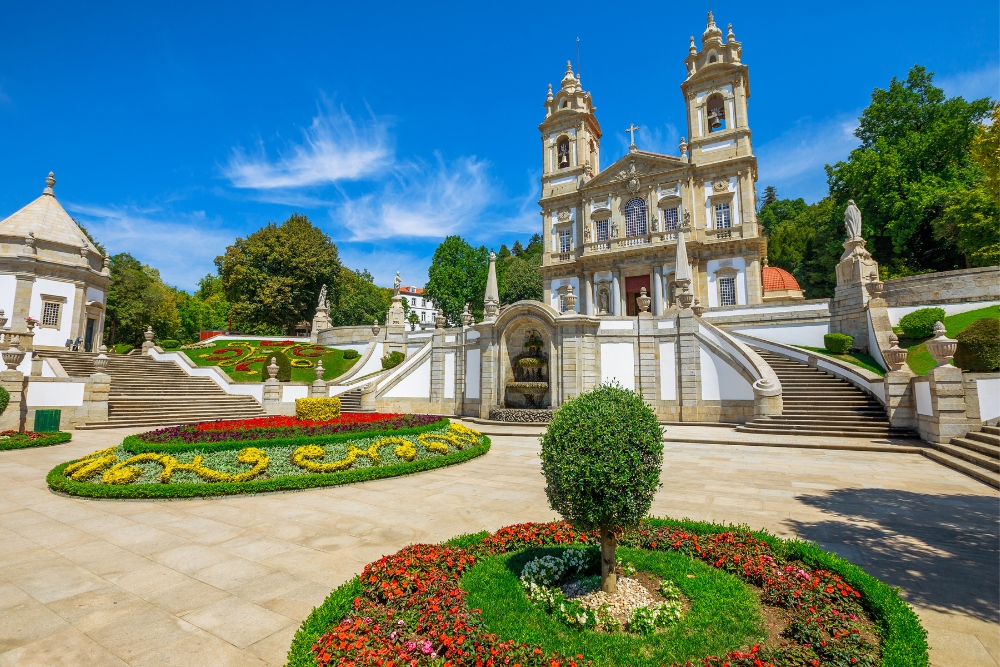
Braga is home to a remarkable collection of historic churches, each with its own architectural style, cultural importance, and religious symbolism. These churches provide a glimpse into the city’s rich past and its devotion to religious traditions. From grand cathedrals to hidden chapels, the churches of Braga offer a diverse and awe-inspiring experience for visitors.
The Sanctuary of Bom Jesus do Monte
One of the most iconic landmarks in Braga is the Sanctuary of Bom Jesus do Monte. Perched on a hillside overlooking the city, this sanctuary is famous for its Baroque-style staircase consisting of 577 steps. Pilgrims climb these steps to reach the church at the top, where they can offer prayers and seek spiritual solace. The intricate details of the sanctuary’s architecture and the serene atmosphere make it a must-visit for both religious and architectural enthusiasts.
The Sé Cathedral of Braga
The Sé Cathedral of Braga, dedicated to St. Mary, is a testament to the city’s religious heritage. With its majestic facade and Gothic architecture, this cathedral stands as one of the most important religious structures in Portugal. Inside, visitors can witness intricate altars, stunning stained glass windows, and religious artifacts that highlight Braga’s devotion to the Catholic faith. The cathedral also houses the tomb of Braga’s first archbishop, making it a site of historical and religious significance.
Basilica do Sameiro
The Basilica do Sameiro is another revered religious site in Braga, known for its devotion to Our Lady of Sameiro. This 20th-century basilica is a masterpiece of Neo-Gothic architecture, with its soaring towers and elaborate decorations. Inside, visitors are greeted by a sense of serenity and devotion, with beautiful artworks and statues depicting scenes from the Bible. The Basilica do Sameiro attracts pilgrims from all over the world who come to pay homage to the Virgin Mary and seek solace in her presence.
Church of Santa Cruz
Nestled in the heart of Braga, the Church of Santa Cruz is a hidden gem that showcases the city’s religious art and devotion. Built in the 16th century, this church exhibits a unique blend of Renaissance and Manueline architectural styles. Its interior is adorned with intricate woodwork, gilded altarpieces, and beautiful tile panels that depict biblical stories. The peaceful ambiance of the Church of Santa Cruz invites visitors to reflect upon their faith and appreciate the artistic mastery of the past.
Religious Festivals in Braga
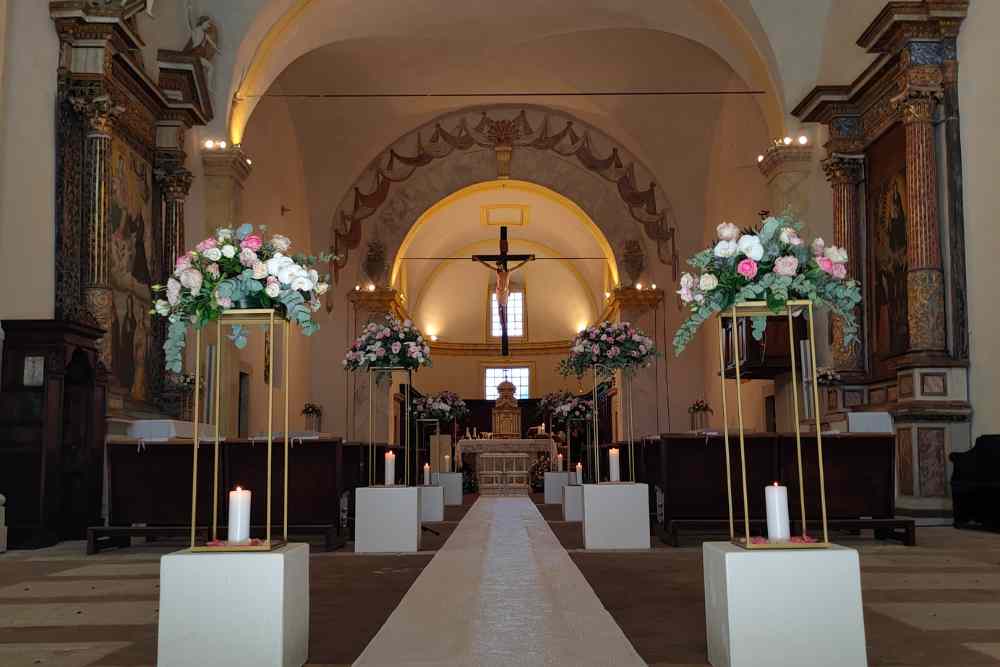
Religious festivals hold a special place in the hearts of the people of Braga, as they allow for the expression of faith and the celebration of religious traditions. The city boasts a vibrant calendar of religious festivals, each filled with joy, spirituality, and cultural significance. These festivals offer a unique opportunity for visitors to immerse themselves in Braga’s religious heritage and experience the city’s devotion come to life.
The Holy Week celebrations
Holy Week, the week leading up to Easter, is a time of profound religious observance in Braga. The city comes alive with processions, religious rituals, and heartfelt prayers as the community commemorates the passion, crucifixion, and resurrection of Jesus Christ. The streets are adorned with religious statues and beautifully crafted carpets made of flowers and sawdust, creating a visually stunning display of devotion. The Holy Week celebrations unite the people of Braga in their shared faith and provide a deeply spiritual experience for all.
Exploring the Festivals of São João
The Festivals of São João, dedicated to Saint John the Baptist, are among the most beloved and lively celebrations in Braga. These festivities, held in late June, blend religious practices with traditional customs and modern revelry. The streets fill with music, dancing, and fireworks, creating an exuberant atmosphere of joy and festivity. The highlight of the festivals is the midnight Mass in the Sé Cathedral, followed by a procession in honor of Saint John. Joining in the Festivals of São João allows visitors to partake in Braga’s cultural traditions and embrace the spirit of camaraderie and celebration.
Participating in the Festa dos Tabuleiros
The Festa dos Tabuleiros, also known as the Festival of the Trays, is a unique and awe-inspiring religious event that takes place in Braga once every four years. This grand festival involves a procession where local women carry tall trays adorned with bread and flowers on their heads. The Festa dos Tabuleiros is deeply rooted in Braga’s history and symbolizes abundance, fertility, and devotion. Visitors who witness this spectacular event will be captivated by the colorful displays, the music, and the contagious enthusiasm of the participants.
Experiencing the Good Friday Processions
The Good Friday processions in Braga are a solemn and moving experience that transports visitors back in time. Walking through the centuries-old streets, one can witness religious brotherhoods carrying beautifully adorned statues of Christ and the Virgin Mary. The processions are accompanied by mournful chants and the sound of drums, creating an atmosphere of reflection and reverence. Participating in the Good Friday processions allows visitors to connect with Braga’s religious traditions and engage with the deeply emotional and spiritual aspects of the Catholic faith.
Cultural and Historical Highlights of Braga
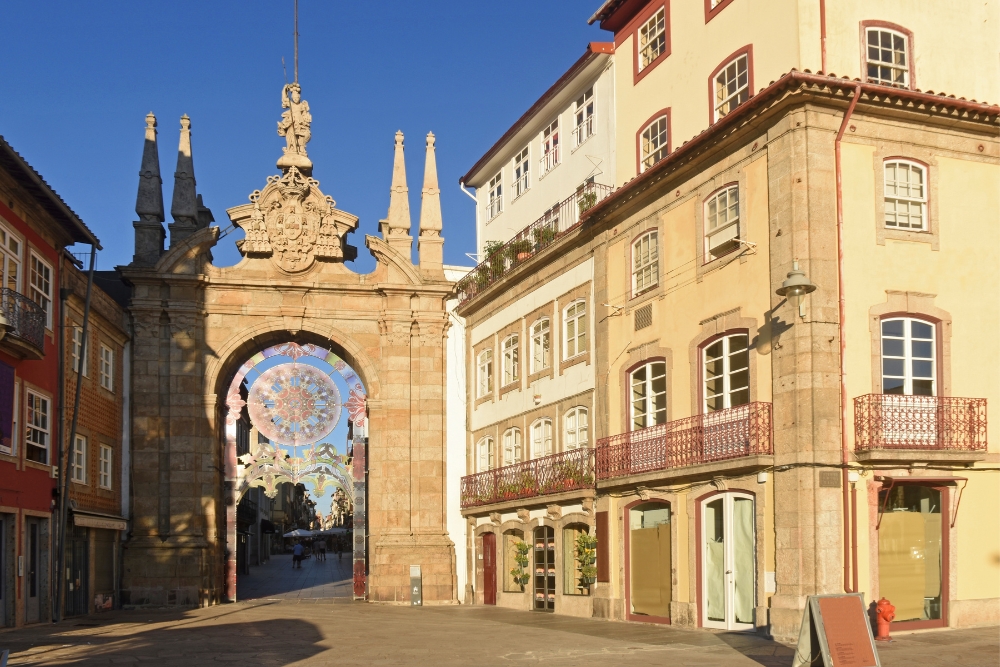
Braga’s cultural highlights offer visitors an opportunity to delve into the city’s past, appreciate its artistic achievements, and indulge in traditional Portuguese cuisine.
The Roman remains in Braga
Braga’s Roman remains provide a fascinating glimpse into the city’s ancient past. The Roman Baths of Maximinus, dating back to the 1st century, showcase the advanced engineering and architectural mastery of the time. The ruins of the Roman Theatre, once the center of entertainment and culture, stand as a reminder of Braga’s significance in the ancient Roman Empire. Exploring these well-preserved remnants takes visitors on a journey back in time to when Braga was a bustling Roman city.
Exploring the historical Castro of Sabroso
The historical Castro of Sabroso is an archaeological site located near Braga that showcases the ancient Celtic settlements in the region. The well-preserved ruins provide insight into the lifestyle, architecture, and culture of the Celtic people who inhabited the area during the Iron Age. Visitors can wander through the stone walls, explore the reconstructed huts, and learn about the customs and traditions of this ancient civilization. The Castro of Sabroso is a hidden gem that allows visitors to connect with Portugal’s pre-Roman past.
Visiting the Biscainhos Museum
The Biscainhos Museum is a must-visit destination for those interested in the cultural heritage of Braga. Housed in a beautiful 17th-century palace, the museum showcases various exhibitions that delve into the city’s history, art, and traditions. From ornate furniture and tapestries to exquisite ceramics and religious artifacts, the Biscainhos Museum offers a comprehensive overview of Braga’s artistic achievements. Visitors can also explore the stunning gardens surrounding the museum, further immersing themselves in the beauty and tranquility of Braga.
Experiencing the traditional Portuguese cuisine in Braga
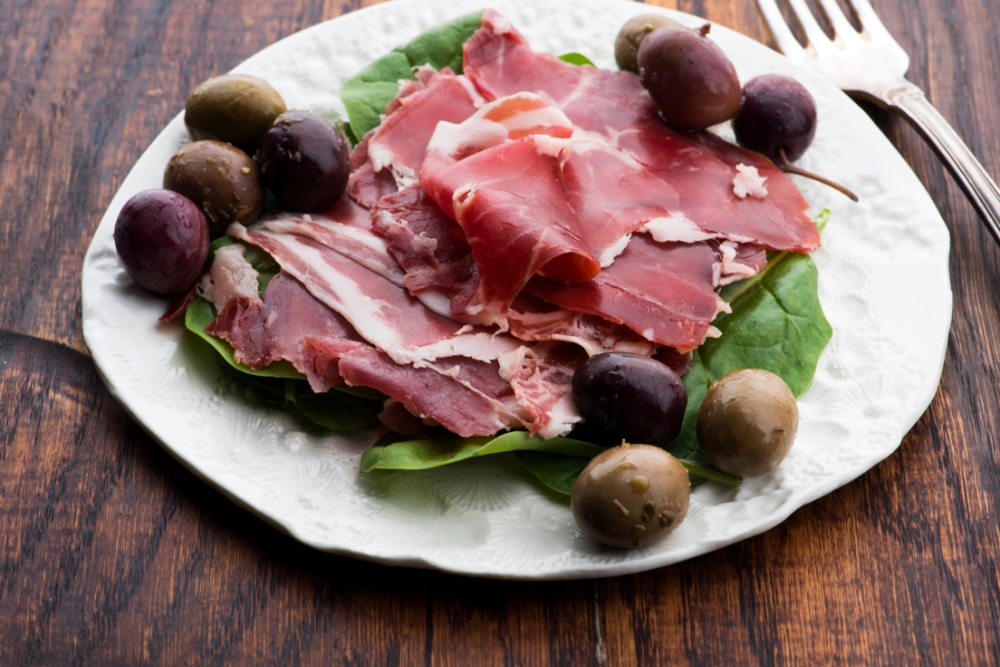
Braga is renowned for its traditional Portuguese cuisine, which reflects the region’s rich culinary heritage. Visitors can indulge in an array of mouthwatering dishes, such as bacalhau à braga (codfish Braga-style), Rojões à Minhota (roasted pork marinated in garlic and wine), and caldo verde (kale soup). The city’s numerous restaurants, cafes, and taverns offer a gastronomic journey through the flavors and traditions of Braga. Exploring the traditional Portuguese cuisine is an essential part of experiencing the cultural essence of Braga.
Monasteries and Convents in Braga
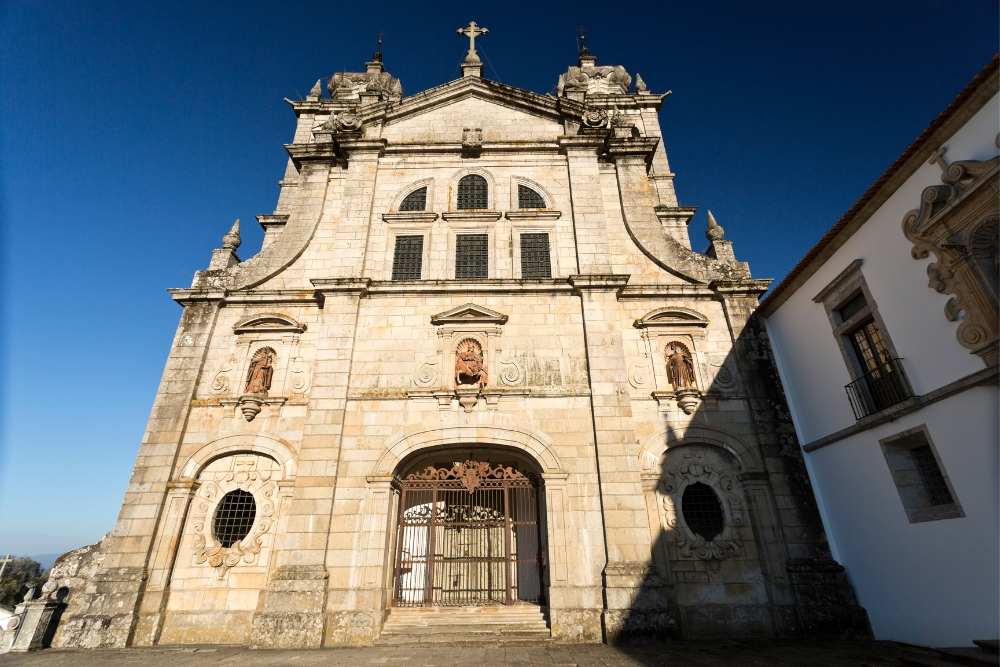
Braga is home to several monasteries and convents that played significant roles in the city’s religious and cultural history. These religious institutions, with their architectural grandeur and spiritual significance, offer a glimpse into the lives of the devout men and women who dedicated themselves to a life of prayer, contemplation, and service. Exploring Braga’s monasteries and convents provides a deeper understanding of the city’s religious traditions and the profound impact these institutions had on the local community.
Monastery of São Martinho de Tibães
The Monastery of São Martinho de Tibães, located just outside of Braga, is a remarkable example of Baroque architecture and monastic life. Founded in the 11th century, this monastery served as the motherhouse of the Benedictine Order in Portugal. The monastery’s church, with its lavishly decorated interior and ornate altarpieces, is a testament to the artistic achievements of the period. Visitors to the Monastery of São Martinho de Tibães can immerse themselves in the tranquility of the monastic grounds, explore the museum, and witness the spiritual legacy that remains.
Convent of São Martinho de Tibães
Adjacent to the Monastery of São Martinho de Tibães, the Convent of São Martinho de Tibães provides a deeper understanding of the religious life of nuns during the Baroque period. This convent, established in the 17th century, served as a place of solace and prayer for the Benedictine nuns. Visitors can wander through the convent’s cloisters, chapels, and gardens, taking in the serene ambiance that permeates the space. The Convent of São Martinho de Tibães allows visitors to connect with the devotion and contemplative life of the nuns who once resided there.
Monastery of Santa Maria do Bouro
The Monastery of Santa Maria do Bouro, located in the municipality of Amares near Braga, is a stunning example of Portuguese Romanesque architecture. This 12th-century Benedictine monastery underwent extensive restoration in the 20th century and is now a hotel, preserving its historical and architectural significance. Visiting the Monastery of Santa Maria do Bouro allows guests to immerse themselves in the tranquil beauty of the abbey, appreciate the intricate details of its architecture, and witness the harmonious fusion of history and modernity.
Convent of Santa Clara
The Convent of Santa Clara, founded in the 17th century, is a testament to the life of the Poor Clares, a Franciscan order of nuns. This convent, located in the heart of Braga, offers visitors a glimpse into the secluded world of the nuns, with its serene cloisters, peaceful gardens, and simple yet elegant chapels. The Convent of Santa Clara showcases the devotion and sacrifice of the Poor Clares and invites visitors to reflect on the importance of prayer and contemplation in the midst of a bustling city.
Final Thoughts About What To See In Braga
In conclusion, Braga stands as a city of churches, religious heritage, and cultural significance, earning its reputation as the religious capital of Portugal. The historic churches, religious festivals, pilgrimage routes, and famous religious figures associated with the city create a vibrant tapestry of spirituality, history, and artistry.
Visitors to Braga can immerse themselves in the rich religious and cultural traditions that define the city, experiencing a transformative journey that connects them with the past and deepens their appreciation for the role of faith in shaping society. Whether exploring the medieval village of Monsaraz, admiring the rugged beauty of Trás-os-Montes, or delving into the cultural and historical highlights of Braga, visitors are sure to be enchanted by the spiritual and captivating essence of this remarkable city.

